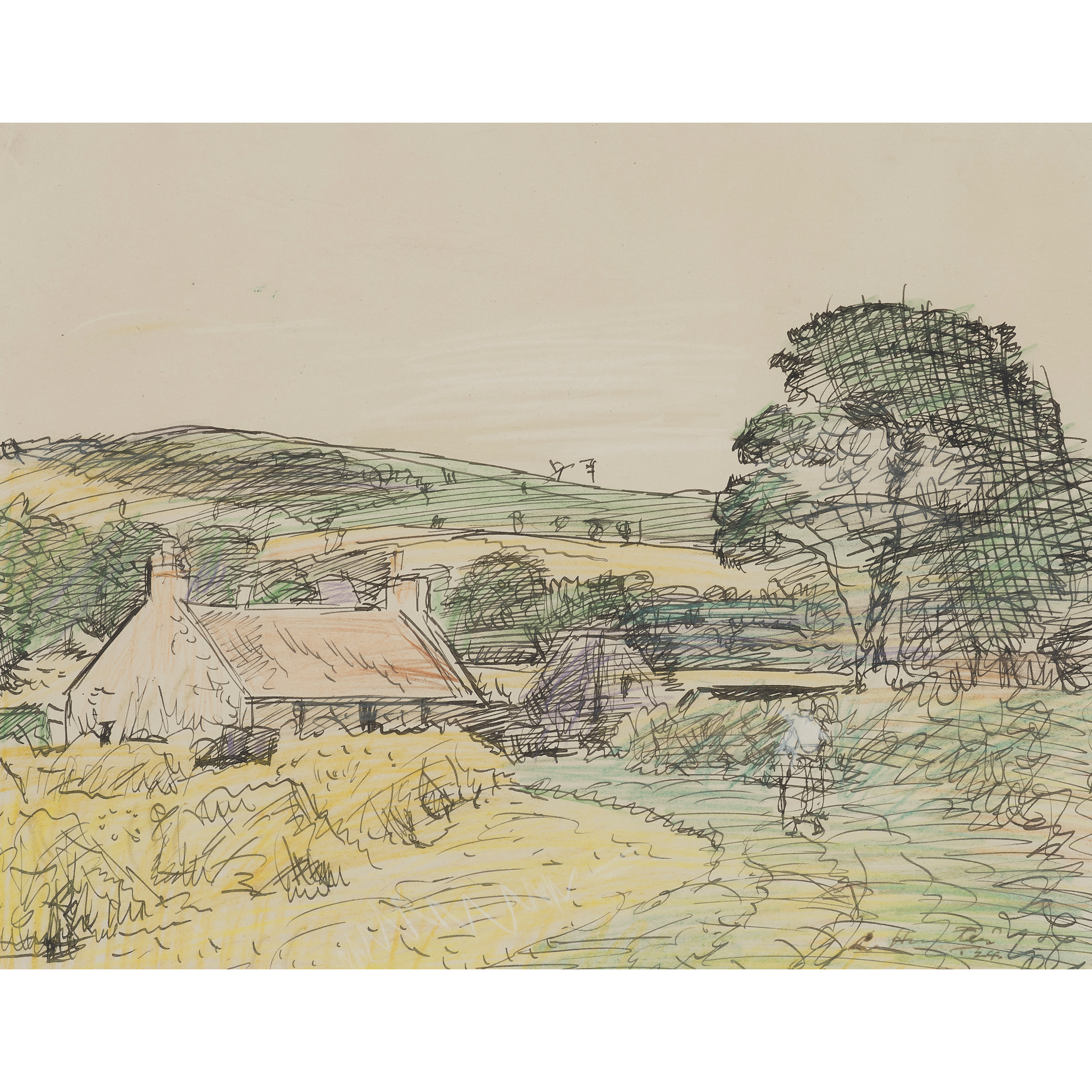GEORGE LESLIE HUNTER (SCOTTISH 1877-1931)
A FIFE LANDSCAPE
Estimate: £1,500 - £2,000
Scottish Paintings & Sculpture
Auction: Evening Sale | Lots 111- 206 | Thursday 05 June from 6pm
Description
Signed and dated '24, pen and ink and coloured chalk
Dimensions
25.5cm x 33cm (10in x 13in)
Footnote
George Leslie Hunter can be considered the most independent of the four artists known as the Scottish Colourists, along with F. C. B. Cadell, J. D. Fergusson and S. J. Peploe. Although born in Rothesay on the Isle of Bute, Hunter emigrated to California whilst a teenager and began his career in San Francisco. However, the destruction of his work in the city’s earthquake of 1906 prompted a move to Glasgow, which was to remain the base of a nomadic lifestyle until his death in 1931.
It is not known what first drew Hunter to work in Fife in eastern Scotland, which is bordered by the Firth of Tay, the Firth of Forth and the North Sea. However, between 1919 and 1924 he spent part of each spring and summer in the region, with its fertile and in parts coastal landscape, as well as its picturesque architecture the focus of his creative endeavours, as seen in Fife Landscape. As Hunter’s biographers Bill Smith and Jill Marriner have pointed out ‘It was there that he made the break to paint en plein air. The artistic ground he gained as a result marked an important turning point in his development in terms of modern colour.’ (Bill Smith and Jill Marriner, Hunter Revisited: The Life and Art of Leslie Hunter, Atelier Books, Edinburgh, 2011, p.79).
‘Largo’ comes from the Gaelic word meaning hillside and is the name of a region in the East Neuk of Fife. It consists of the villages of Upper and Lower Largo and Lundin Links. It was in this area that Hunter painted Boats and Figure, Largo and Figures on the Pier, Largo. Given their intimate scale, they were probably made on the spot in direct response to the views before him, of modest fishing boats moored at Lower Largo harbour. Particular attention is paid to the vertical mooring posts, the draw of mooring ropes and the colourful figures arrayed along the pier. The depiction of water in motion is signified by expressive brushstrokes, whilst highlights of bright colour, especially of red, enliven the compositions.
Both paintings passed through the hands of the renowned dealer Alexander Reid, in whose Glasgow gallery, La Société des Beaux Arts, Hunter received his first solo exhibition in 1913. Reid did much to support Hunter’s career, championing him alongside his fellow Colourists in exhibitions mounted in London and Paris, whilst his son, A. J. McNeill Reid, organised a solo exhibition at the Feragil Galleries in New York in 1929.
Paintings of Largo by Hunter can be found in various public collections including those of Aberdeen Art Gallery and Museums, The Fleming Collection, London, The Hunterian, University of Glasgow, Kelvingrove Art Gallery and Museum, Glasgow, Perth Art Gallery and the National Galleries of Scotland.

